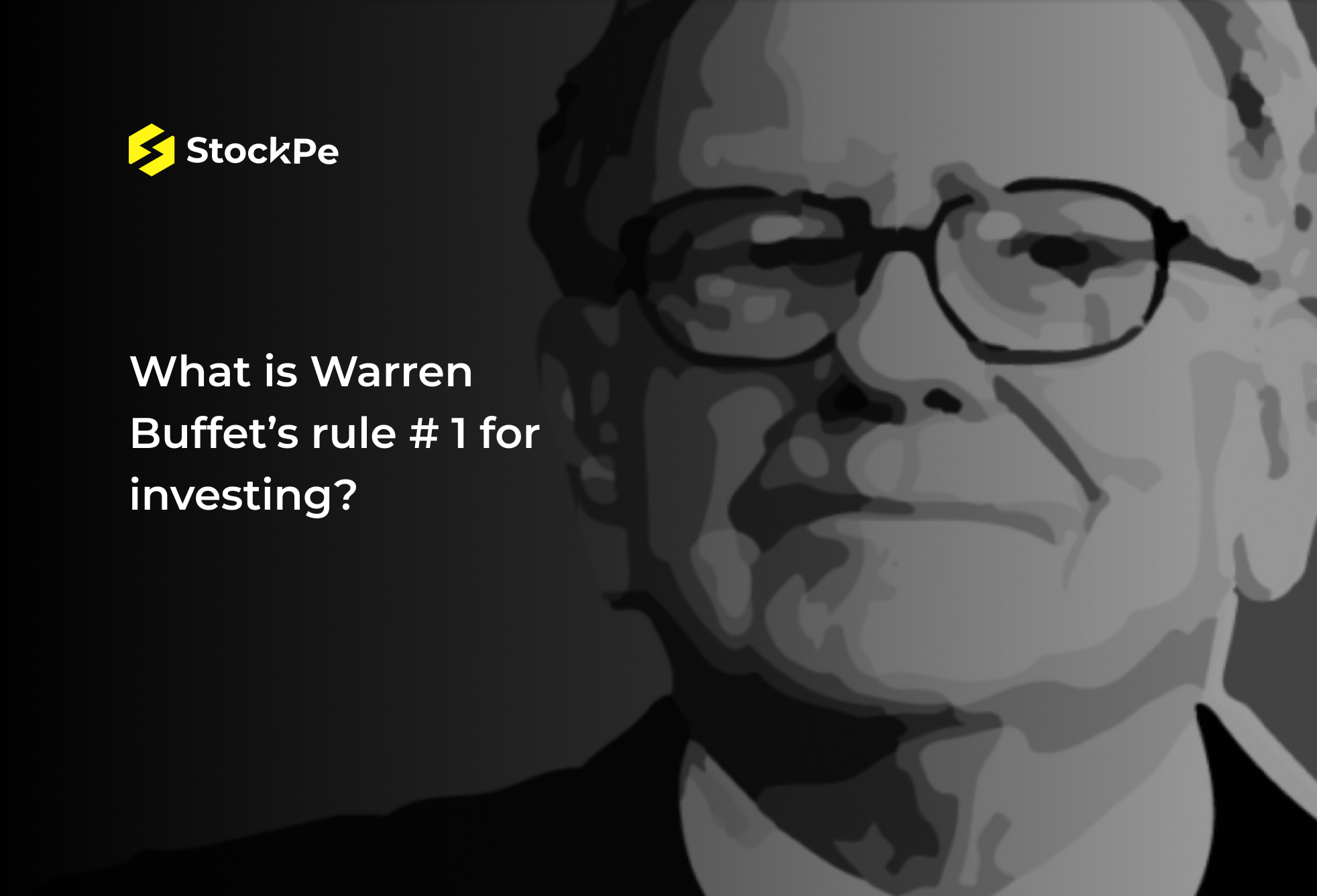Buffett is one of the greatest investors in history. He owns over $100 billion of stocks and other financial assets. Specifically, Warren Buffett is famous for his long-only investment approach and values of service. He has also been equally effective in accumulating high shareholder returns every financial period.
His investment strategy is based on sound knowledge of his industry. He has also followed prudent investing measures throughout his career. This article exclusively deals with the first Warren Buffet rule of investment.
Rule #1: Don’t lose money
Buffett famously said that the first rule of investing is “Don’t lose money,” and the second is “Don’t forget the first rule.” This principle states that saving capital is better than losing it, even if a short-term profit can be made despite the saving.
Buffett focuses on target stocks with good long-term outlooks. This makes his investments work and avoids losses.
How not to lose?
Here are some tips to help you avoid losing money:
- Monitor portfolio performance: To determine whether your investment is improving, compare your portfolio’s relative returns with a similar target portfolio. For instance, if the composition of your portfolio stands at 60% stocks and 40% bonds, compare it with another portfolio with the same proportion. Usually, the financial advisors present the clients with focused portfolio benchmarks that can be highly useful compared to the portfolio in question.
- Seek professional advice: If your investments are still weak, it is wise to seek the advice of some other investment expert. Ensure that your financial advisors are as fiscally responsible and patient as you are and match your risk tolerance and financial goals. Advisors and their clients must have clear expectations about their investment plans and their implementations.
- Understanding market fluctuations: We must understand that markets are unpredictable in times of volatility. A consultant’s performance cannot be measured merely by the money lost during the period in question. For instance, while the market is down by 30%, your stock market game portfolio is down only 10% – indicating that your advisor has mitigated that well. Ensure that your advisor is reliable, and place your financial needs before the advisor’s needs. Also, ensure that the strategies to be implemented align with your objectives.
Warren Buffett’s Early Beginnings as an Investor
As a child, Buffett displayed a significant interest in finance and investments. At the young age of 11 years, he bought his first stock in Cities Service Preferred Stock only to sell it for a small profit. By the time he reached 14 years, he could save about $1000, indicating his impressive stock market game. In high school, Buffett continued to invest profitably and seemed to have an innate ability to read markets. His undergraduate degree is in economics and finance from the University of Nebraska and Wharton School of the University of Pennsylvania, while his value investing was at Columbia University under the guidance of Benjamin Graham.
Bernard Buffett’s investing strategy was influenced by Benjamin Graham, widely referred to as the father of value stocks. Buffett was interested in investing and attended Graham’s course on security analysis. After his graduation, Buffett joined Graham Newman Corporation, where he enhanced his valuation lessons from Graham. This was crucial to Buffett’s investment strategy.
First economic successes
Early in his career, Buffett made several notable investments, including GEICO and Rockwood, where he demonstrated an ability to spot undervalued companies with growth potential. His keen eye for market opportunities and broad understanding of the principles of value investing laid the foundation for his future success.
Buffett Associates, L.P.
In 1956, capitalising on his growing reputation and sophisticated investment skills, Buffett founded Buffett Associates, L.P. This fund eventually morphed into the multinational Berkshire Hathaway, which began Buffett’s extraordinary investment journey.
Warren Buffett’s investment strategy
Buffett’s investment strategy focuses on value investing, identifying low-cost companies with high growth potential. He looks for companies with sustainable competitive advantages, such as raw solid materials or a high barrier to entry, and invests at attractive prices. This strategy has always given Berkshire Hathaway high returns.
Focus on traditional projects.
Buffett traditionally avoids high-risk sectors like technology, favouring stable sectors like retail, insurance, and finance. His long-term investments earn him a return on accumulated interest, and he holds them for years or decades to maximise returns.
Buffett’s method incorporates several vital metrics and techniques:
| Strategy | Description |
| Market Capitalization | Focuses on larger, established companies with significant market presence. |
| Debt Levels | Prefers companies with manageable debt levels to ensure financial stability. |
| Earnings Per Share (EPS) | Looks for consistent and growing EPS indicates a company’s profitability. |
| Durable Competitive Advantage | Seeks companies with strong brands, high barriers to entry, and loyal customers. |
| Management Quality | Invests in companies with ethical, competent, and visionary leadership. |
| Long-term Focus | Emphasizes holding investments for extended periods to benefit from compounding. |
The Evolution of Buffett’s Strategy
Over the years, Buffett’s strategy has evolved. Initially, he practiced “cigarette butt” economics, targeting companies suffering from residual value. But as his business grew, he turned his attention to acquiring high-quality companies at reasonable prices. This change was influenced by his partnership with Charlie Munger, who emphasized investing in companies with solid products and sustainable competitive advantage.
Buffett’s Investment Evolution:
| Investment Phase | Strategy | Characteristics | Notable Investments |
| Early Years | Cigar Butt Investing | Focus on distressed companies with some residual value | Cities Service Preferred Stock |
| Post-Graham Influence | Value Investing | Focus on undervalued stocks with potential for growth | GEICO, Rockwood |
| Partnership with Munger | Quality at a Fair Price | Investing in companies with durable competitive advantages | Coca-Cola, American Express |
| Modern Approach | Diversified Value Investing | Inclusion of technology stocks, long-term focus | Apple, Amazon |
FAQs
What is the essence of Buffett’s investment principles?
Buffett recommends buying raw materials with long-term stable potential. This requires active due diligence and commitment to holding the investment through market fluctuations until the company’s prospects fundamentally change.
What are the critical metrics for stock analysis?
Buffett looks for market capitalisation, debt levels, and earnings per share in the stock market game when evaluating stocks. He looks for companies with solid balance sheets, competent management, and good long-term prospects suitable for long-term investment.
When is the best time to hold, according to Warren Buffet?
Buffett’s good time holding is effectively “forever.” He manages his portfolio, adding to it when prices are attractive and maintaining the market’s ups and downs, viewing volatility as an opportunity rather than a threat.





